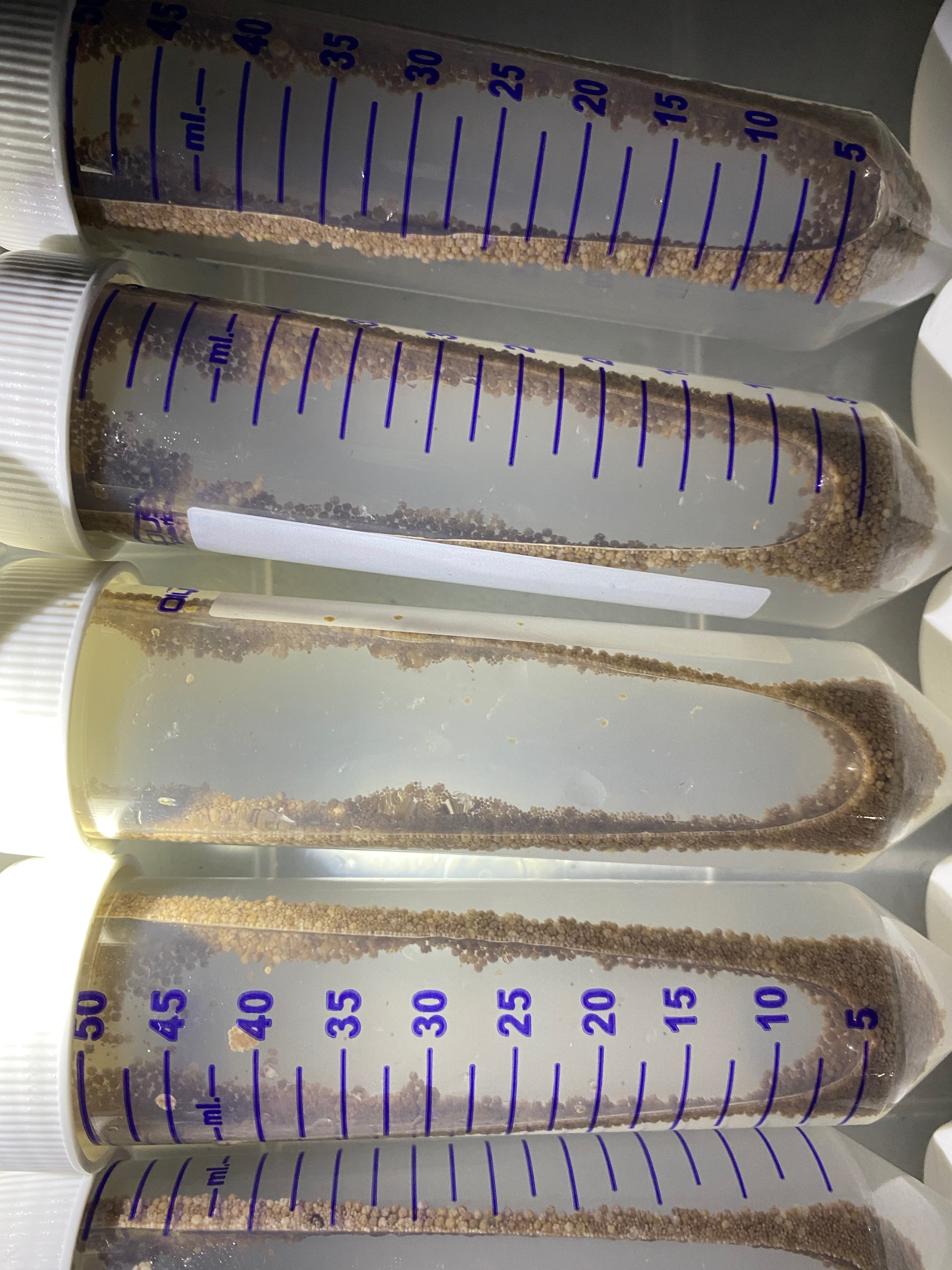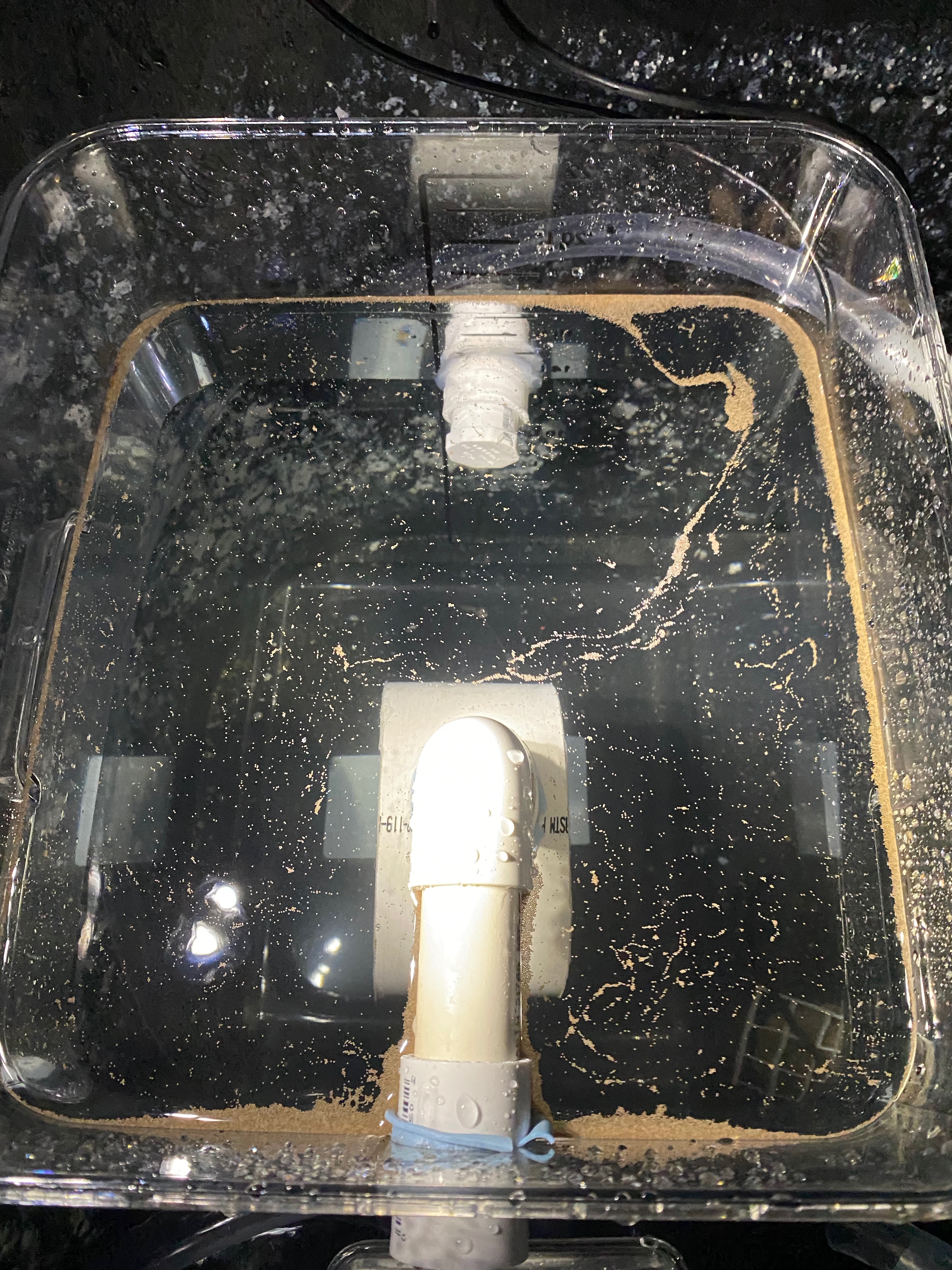Mcapitata Spawning and Fertilization June 2021
Collection, fertilization, and rearing of Montipora capitata spawned gametes during the June 2021 spawning at the Hawaii Institute of Marine Biology.
Overview
Follows protocols outlined in my July 2020 spawning notebook post.
Fertilization of wildtype M. capitata gametes for rearing an use of larvae in larval temperature experiment at HIMB in June 2021.
Activities
Isolating colonies in the laboratory (unsuccessful)
-
Collected n=13 adult Montipora capitata colony fragments (<30cm) from HIMB reef off of the Point Lab on 6/9/2021. Colonies were held in 2 black tanks at Point Lab at ambient temperaure.
-
Before spawning, colonies were placed in individual buckets and observed during the spawning window (~2030-2130).
-
No spawning observed on 6/9/2021. No gametes collected.
-
Spawning observed on 6/10/2021. Collected bundles from 4-5 parent colonies at 2030-2130 and added bundles into 50mL falcon tubes per Coral Resilience Lab protocols in Hancock et al. 2021.
-
2-5 mL of bundles added to 35-45mL of water in falcon tubes. Tubes laid sideways to maximize surface area for fertilization. Allowed to fertilize until all bundles were broken apart into eggs and sperm. Total n=7 tubes. All embryos kept at ambient temperature.
-
Removed sperm and water from falcon tubes with turkey baster and then poured eggs into n=6 conicals at 2330. Low water flow used (15mL per 10 sec). Cultures checked hourly during the night. Dead material was removed with a pipette and surface of water was cleaned with Kimwipes to remove film.
-
All cultures crashed at 0700 on 6/11/2021. Checked remaining material under scope and all embryos were fertilized eggs, there was likely too low of genetic diversity to fertilize.
-
Washed, cleaned, and reset all conicals.
Wildtype gamete collection (successful)
-
Collected gametes in collaboration with the Coral Resilience Lab by scooping from the water at approx. 2100 at Reef 13 in Kaneohe Bay, Oahu, Hawaii on June 11. Montipora capitata is a gonochoristic broadcast spawning, vertically-transmitting coral species that is abundant in Kaneohe Bay. Collection of wild released bundles allowed for gamete collection representative of the natural spawning population. From a boat, gametes were scooped using mesh bottom containers and combined in 5 gallon buckets and thoroughly mixed. Then, 5mL of bundles were added to a 50mL falcon tube with 40-45 mL of seawater. A total of ~40 falcon tubes were filled and secured in a rack. We then returned to the lab at HIMB. This collection allows for a representation of the wildtype spawning with fertilization occuring from a pooled sample.
-
Within approx. 1-2 hours, the bundles break apart into eggs and sperm. Falcon tubes were occassionally gently rocked to encourage mixing and laid on their side to give maximum surface area for eggs to prevent degradation of eggs.
-
After all bundles were broken and allowed to fertilize, embryos were added to the 25L conical rearing vessels by gently removing sperm and seawater in falcon tube using a turkey baster, then pouring the positively buoyant eggs into the conical vessel. Conicals were supplied with flow-through seawater at ambient temperature at low flow (~15mL/10sec). One falcon tube of eggs added to each conical
-
Because we had many embryos/falcon tubes, embryos were also added into 5 gallon buckets filled with water (with no flow) under shade tent. Total of 16 buckets used as “backups”.
-
All cultures were checked every 1-2 hours follwoing fertilization and cleaned as necessary. Surface mixing from wind helped reduce mortality in buckets, these cultures were very successful. Kim wipes were used to remove any film from the surface of the water and any dead material was removed with a transfer pipette. Some mortality occured around 8-10am, but fertilized and developing embryos were present and mortality was minimal.
-
Cultures in buckets were combined and cleaned into n=12 buckets. These buckets were then put into two black tanks and submerged such that the black tank created




